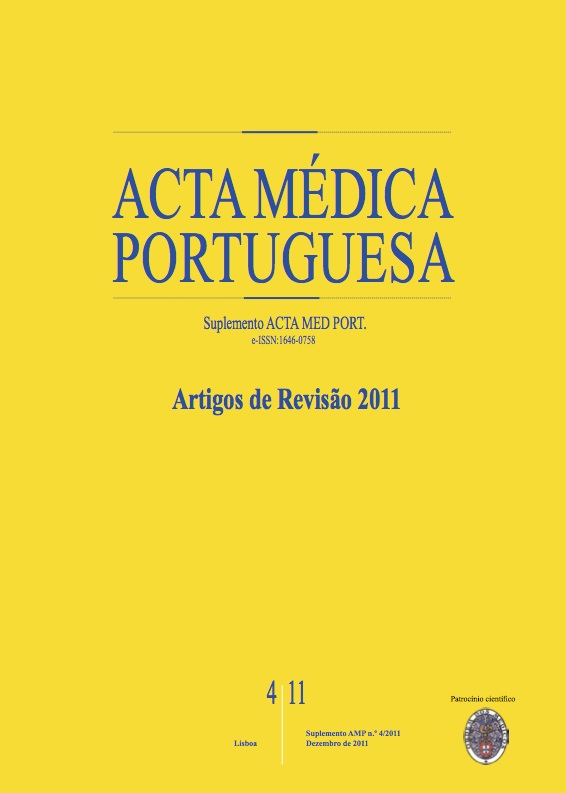BRAF gene mutation in the natural history of papillary thyroid carcinoma: diagnostic and prognostic implications.
DOI:
https://doi.org/10.20344/amp.1585Abstract
The papillary carcinoma is the most prevalent malignant neoplasm of the thyroid gland, representing 85-90% of all cases, and its incidence has been increasing in recent years. It is relatively indolent, however other types poorly differentiated or anaplastic, are more aggressive and usually associated with poor prognosis. Approximately half of these papillary carcinomas harbor a thymine-to-adenine transversion (T1799A) point mutation, in the gene encoding the serine/threonine-kinase B-type Raf kinase (BRAF), with substitution of valine by glutamate (V600E). Mutated BRAF, generates a constitutive activation of the mitogen-activated protein kinases (MAPK) signaling pathway, which plays a critical role in transmitting proliferative signals generated by cell surface receptors and cytoplasmic signaling elements, to the nucleus. BRAF mutation is mutually exclusive with other common genetic alterations, supporting its independent oncogenic role in cell proliferation, survival and tumor de-differentiation. The BRAFV600E occurs exclusively in papillary thyroid carcinoma and papillary carcinoma-derived anaplastic cancer, rising as a specific diagnostic marker for this tumor when identified in cytological / histological exams. This mutation has recently emerged, as a potential prognostic marker for papillary thyroid carcinoma, after several studies have found this mutation to be associated with some clinicopathological characteristics, known to predict tumor recurrence and progression, including, for instance, old patient age, extrathyroidal invasion and lymph node metastasis. It is therefore considered a marker of aggressive disease in these tumors, associated with increased cancer recurrence and even loss of radioiodine avidity. Several studies were not able to confirm these associations. It has become clearer that BRAF mutation will likely have significant impact on the clinical management of papillary thyroid carcinoma.Downloads
Downloads
How to Cite
Issue
Section
License
All the articles published in the AMP are open access and comply with the requirements of funding agencies or academic institutions. The AMP is governed by the terms of the Creative Commons ‘Attribution – Non-Commercial Use - (CC-BY-NC)’ license, regarding the use by third parties.
It is the author’s responsibility to obtain approval for the reproduction of figures, tables, etc. from other publications.
Upon acceptance of an article for publication, the authors will be asked to complete the ICMJE “Copyright Liability and Copyright Sharing Statement “(http://www.actamedicaportuguesa.com/info/AMP-NormasPublicacao.pdf) and the “Declaration of Potential Conflicts of Interest” (http:// www.icmje.org/conflicts-of-interest). An e-mail will be sent to the corresponding author to acknowledge receipt of the manuscript.
After publication, the authors are authorised to make their articles available in repositories of their institutions of origin, as long as they always mention where they were published and according to the Creative Commons license.









